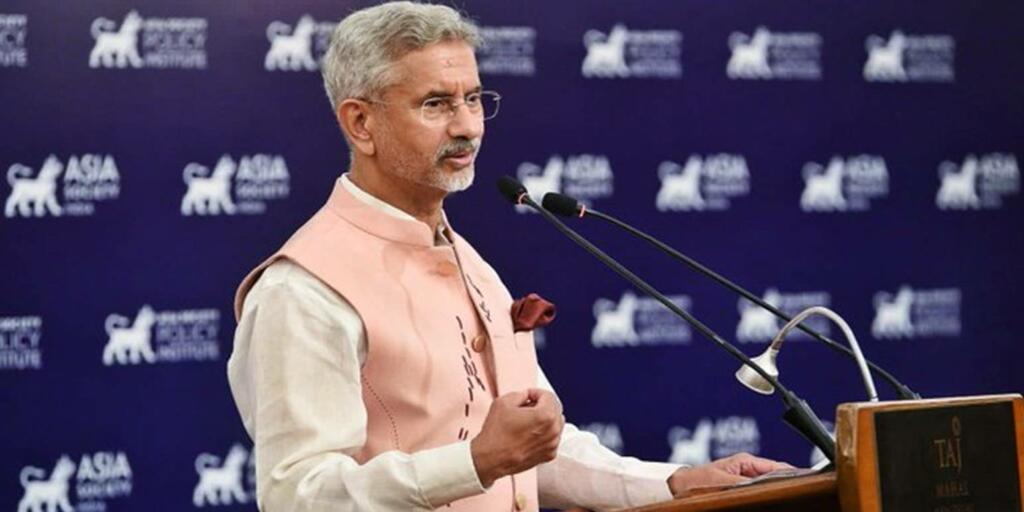In an archetypal story of Panchtantra named “two cats and a monkey” Pandit Vishnu Sharma taught us that when two people fight, the third party takes advantage. Currently, Asian century is at the cusp of seeing this philosophy come alive.
Jaishankar’s remarks regarding Asian Century
Recently, India’s External Affairs Minister S. Jaishankar addressed an enlightened audience at the launch of Asia Society Policy Institute. In his brief, but eloquent speech he touched upon many issues including Asian Century, division in Russia, and Asia for Asians among others. He also took the opportunity to remind the world that the unilateral rise of Asia should not be over romanticised. He hinted towards India-China acrimony of 1950 as an example of the effects of over romanticisation.
Dr Jaishankar is of the opinion that the Asia for Asians formula will work only when big powers in the continent trust each other. Few sentences later, he gave a reality check to the experts by stating that the USA and Australia also want to be key participants in Asia. In what seemed to be a reference to Vasudhaiva Kutumbakam (world is one family) philosophy of Indic civilisation, Dr Jaishankar said, “There are resident powers in Asia like the United States or the proximate ones like Australia who have legitimate interests. Their contribution is also invaluable for securing the global commons. India’s universalist outlook, expressed in the belief of the world as a family, encourages it to go beyond exclusivist Asian approaches.” (sic)
Rise of China has not been peaceful
The fine print of his speech is a clear indication of India’s approach towards Asian Century. Apparently, when the talk of the 21st century being an Asian one started to make rounds, China was the first one to join the bandwagon. Shedding some ruptures of Communism, the Chinese administration focused on economic growth for 2-3 decades.
Officially, its economy did skyrocket and Chinese products started to dominate the Asian as well as international market. Soon, China became the largest economy of Asia and in fact second largest economy of the world.
But, it was never going to take others on its side. India had learnt this way back in the 1950s.
Soon, China started to impose its military might on countries around its land and sea. Its South China Sea offence is a well documented phenomenon. Since these little countries were dependent on Chinese products, China thought that they would cave in and then CCP would assimilate them under its sphere of influence.
China’s desire to browbeat India
But, these countries presented a tough fight to the Chinese. Then China thought that if they are able to take India under their grip, these countries would follow the lead. After all, countries like the Philippines, Vietnam and many others along its periphery are not nuclear powers, but India is. In turn, what transpired; shocked the Chinese administration to its core.
With the intention of attacking Indian sovereignty, the Chinese PLA launched an offensive in Galwan valley. They met with a counter force of ferocious intensity. Soldiers clashed in hand-to-hand fighting resulting in casualties of more than 50 Chinese soldiers. Decades of chauvinism around Chinese martial arts was also demolished by soldiers of the Bihar regiment.
QUAD counter and role of non-Asian countries in Asia
The Modi government said enough was enough and launched diplomatic, strategic and economic aggression against China. China was soon on the backfoot. Its geopolitical consequences are more severe and in fact impacting the rise of Asian century. The United States, which was a derided name in Asia by the end of 2015 got an opportunity to resurrect its prospects in the continent. PM Modi and late Shri Shizo Abe had joined hands to counter Chinese threat and by virtue of strong alignment with the Japanese, the US gained a much larger share in Asia.
In the southern hemisphere, Australians also became aware of the Chinese threat. They had already got a glimpse of it when China paid Australian politicians to get pro-China outcomes. There have been talks of Australia being part of Asia and that is how Australia ended up becoming pro-active in anti-China QUAD grouping.
India was well-aware of China but Bill Clinton was not and that explains him paving the way for Chinese entry in WTO. At the end of the day, Americans only ended up benefitting from this fatal mistake. They are again relevant in Asia and Jaishankar himself has confirmed it.
Support TFI:
Support us to strengthen the ‘Right’ ideology of cultural nationalism by purchasing the best quality garments from TFI-STORE.COM
